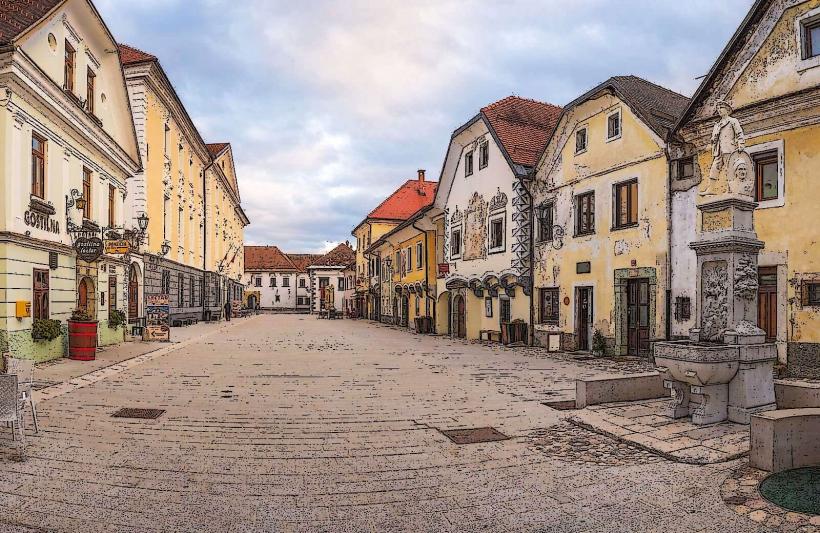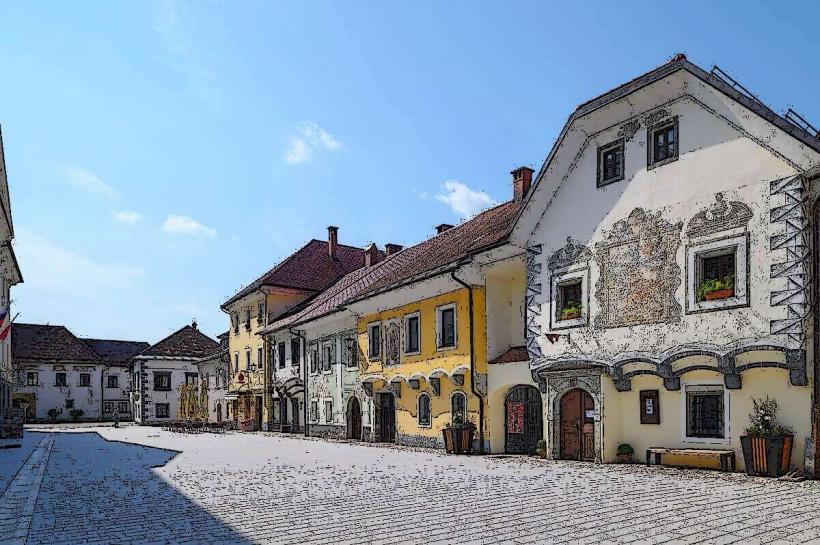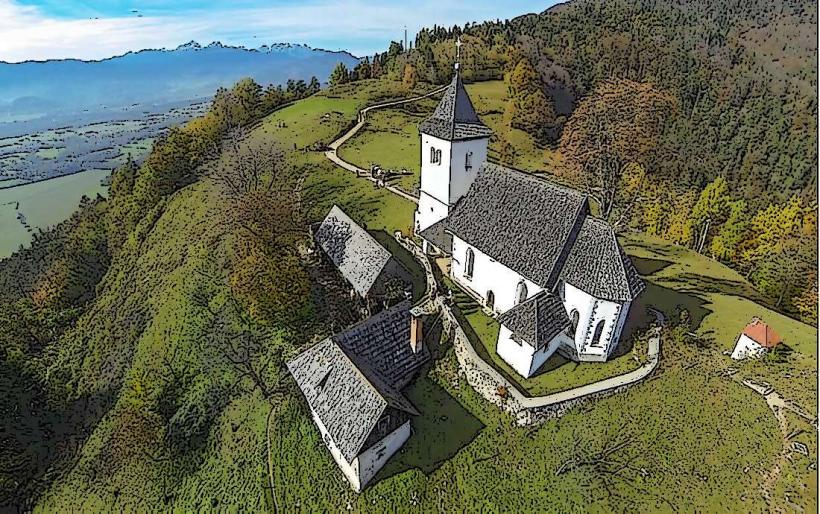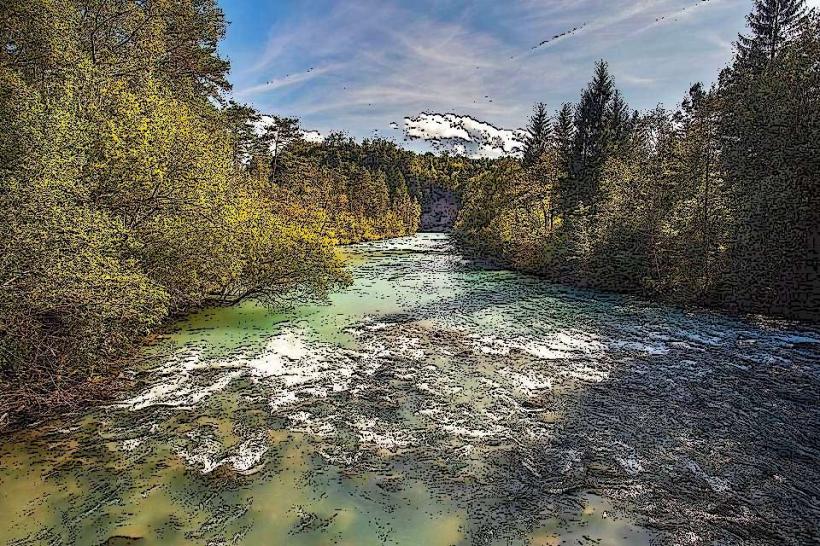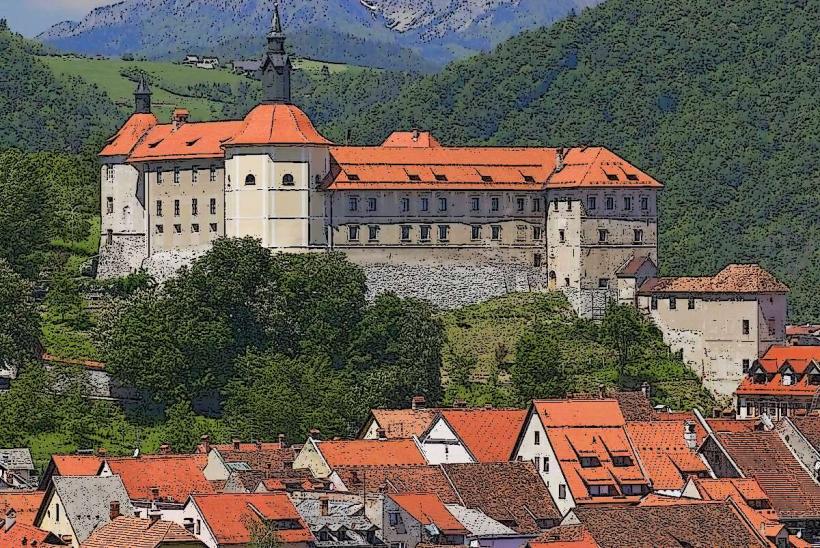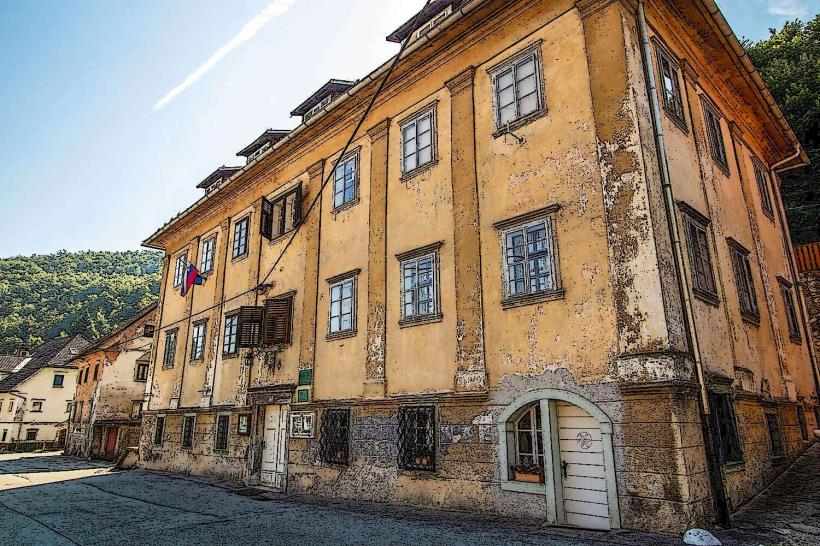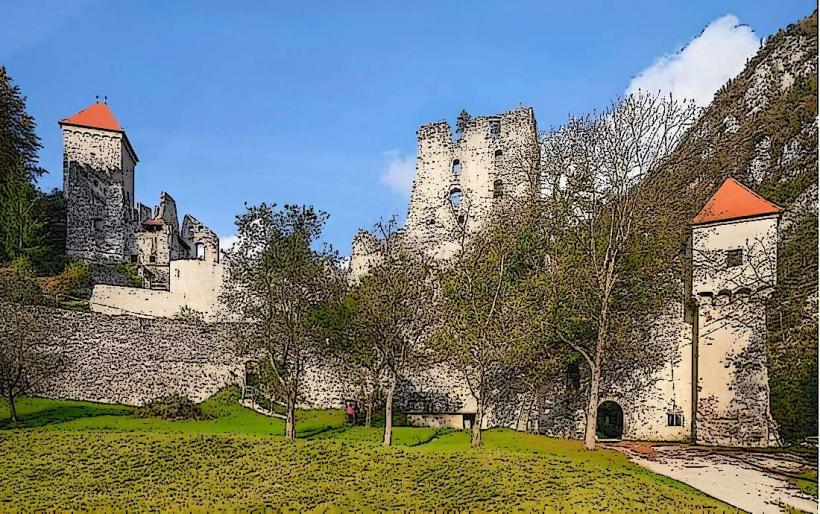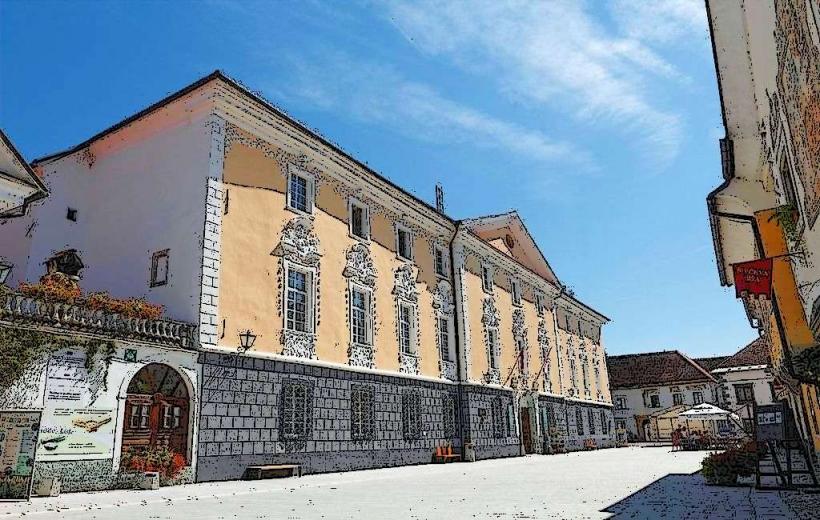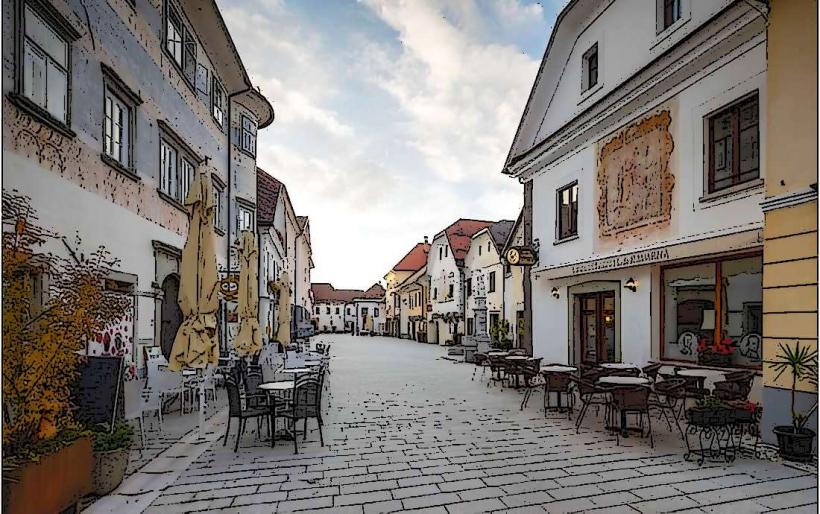Information
City: RadovljicaCountry: Slovenia
Continent: Europe
Radovljica, a charming town in Slovenia, known for its rich history, beautiful surroundings, and well-preserved medieval architecture.
General Overview
- Status: Radovljica is a small town located in the Upper Carniola region of Slovenia. It is the administrative center of the Radovljica Municipality.
- Location: The town lies on the northern edge of the Ljubljana Marshes, near the base of the Julian Alps, in the Sava River Valley.
- Population: Approximately 8,000-10,000 residents.
- Area: The municipality covers an area of about 165 square kilometers (63.7 square miles).
- Altitude: The town is situated at an elevation of around 400 meters (1,312 feet) above sea level.
Geography
- Position: Radovljica is strategically located at the confluence of the Sava and Radovna rivers, offering picturesque views of the surrounding mountains and valleys.
- Climate:
- The town experiences a continental climate, with cold winters and warm, humid summers.
- Summer temperatures typically range from 20-30°C (68-86°F), while winter temperatures often drop below freezing, with snow in the surrounding mountains.
- Natural Features:
- Radovljica is surrounded by rolling hills, wooded areas, and alpine peaks, which contribute to its rural charm.
- The nearby Triglav National Park offers opportunities for hiking, skiing, and nature exploration.
History
Ancient and Medieval Times
- The region around Radovljica has been inhabited since prehistoric times, with evidence of settlements from the Bronze Age and Iron Age.
- During the Roman period, the area was part of the Roman province of Noricum.
- The town itself was first mentioned in historical records in 1234 and developed as a medieval settlement along the trade routes connecting Carniola to the rest of Europe.
Modern History
- Radovljica became an important administrative and commercial center during the Middle Ages, particularly due to its location along major trade routes.
- The town has maintained its medieval charm, with many historical buildings still standing, including the Radovljica Castle and various baroque and Renaissance structures.
- After World War I, the town was incorporated into the newly established Kingdom of Yugoslavia, and after Slovenia gained independence in 1991, Radovljica became part of the Republic of Slovenia.
Economy
- Tourism: The primary economic driver in Radovljica is tourism, particularly cultural tourism and eco-tourism. Visitors are drawn to its historic town center, museums, and proximity to natural attractions like Lake Bled and Triglav National Park.
- Agriculture: The region is known for its fertile soils, with agriculture playing a role in the local economy. The production of fruits, especially apples and berries, as well as honey and dairy products, is common.
- Crafts and Art: Radovljica has a long tradition of craftsmanship, including woodwork, pottery, and lace-making. The Beekeeping Museum celebrates the town's history as a center of beekeeping.
Culture and Lifestyle
Local Culture
- Radovljica’s culture is deeply influenced by its medieval heritage, with many buildings and traditions reflecting the town's past. The town has a strong connection to Slovenian folk culture and the region's Carniolan traditions.
Cuisine
- Radovljica Cuisine: Traditional Slovenian dishes feature locally grown produce and meats, particularly pork, beef, and poultry.
- Slovenian Honey: Radovljica is part of the Upper Carniola region, which is known for its honey production. The town is home to the Beekeeping Museum, celebrating the region's long history with apiculture.
- Kranjska Klobasa: A traditional Slovenian sausage, made from pork and beef, typically served with sauerkraut.
- Potica: A traditional Slovenian pastry filled with various ingredients like walnuts, poppy seeds, or tarragon, often enjoyed during holidays and festivals.
Festivals and Events
- Radovljica Festival: This summer festival celebrates local culture with a range of events, including classical music concerts, art exhibitions, and theatrical performances.
- Honey Festival: Held annually in Radovljica, this festival celebrates Slovenia’s rich beekeeping heritage, with honey producers, tastings, and workshops.
- Medieval Days: A medieval-themed event where the town comes alive with reenactments, performances, and markets, drawing on Radovljica's historical background.
Natural Attractions
Radovljica Castle:
- The Radovljica Castle is one of the town’s main landmarks, offering beautiful views of the surrounding area and housing a museum and art gallery.
Triglav National Park:
- Radovljica’s proximity to Triglav National Park allows easy access to Slovenia’s most famous natural attraction, offering opportunities for hiking, climbing, and enjoying pristine alpine landscapes.
Lake Bled:
- Lake Bled, one of Slovenia’s most iconic destinations, is only about 10 kilometers (6 miles) away from Radovljica. The lake offers activities like boating, swimming, and walking around its famous island with the Bled Castle overlooking the water.
Sava River:
- The Sava River flows near Radovljica, providing opportunities for fishing, kayaking, and picnicking along its banks.
Urban Design and Architecture
Medieval Old Town:
- Radovljica’s old town is a well-preserved example of medieval and Renaissance architecture, with narrow streets, stone buildings, and quaint squares. Notable buildings include the Radovljica Parish Church and several noble residences.
Radovljica Castle:
- The town’s most prominent architectural feature, the Radovljica Castle, sits above the town, offering a glimpse into the town's medieval past. The castle has been well-preserved and now houses a museum and art gallery.
Beekeeping Museum:
- Radovljica is home to Slovenia’s Beekeeping Museum, where visitors can learn about the region’s deep connection to apiculture and see examples of traditional beekeeping equipment and hives.
Transportation
- Roads and Highways: Radovljica is easily accessible by road, with connections to major highways leading to Ljubljana, Bled, and Kranj. The town is located approximately 30 km (19 miles) from Ljubljana and Bled.
- Rail: The nearest train station is in Lesce-Bled, around 5 km (3 miles) from Radovljica, with connections to Ljubljana and other Slovenian cities.
- Airports: The nearest international airport is Ljubljana Jože Pučnik Airport, located about 30 km (19 miles) from Radovljica.
Recreational Activities
- Hiking and Cycling: Radovljica’s surrounding countryside and Triglav National Park offer numerous hiking and cycling trails, catering to all levels of outdoor enthusiasts.
- Fishing: The Sava River and surrounding lakes provide ample opportunities for fishing, especially for trout and carp.
- Skiing: In the winter months, nearby resorts like Kranjska Gora and Javornik offer skiing and snowboarding opportunities.
- Beekeeping: Visitors can engage in beekeeping workshops and tours at the Beekeeping Museum.
Education and Research
- Cultural and Historical Preservation: Radovljica has several educational programs focused on cultural heritage preservation, particularly related to medieval architecture and apiculture.
- Beekeeping Research: Given its history, Radovljica is home to several research initiatives and institutions dedicated to beekeeping and honey production.
Sustainability Efforts
- Eco-tourism: Radovljica has embraced eco-tourism practices, promoting sustainable tourism that respects the town's natural surroundings and preserves its cultural heritage.
- Conservation of Natural Areas: As part of the Triglav National Park area, Radovljica participates in conservation efforts to protect the region’s diverse ecosystems and landscapes.
- Local Products: The promotion of local honey and sustainable farming practices is key to the town’s commitment to environmental preservation.
Key Features
- Medieval Old Town: A picturesque and well-preserved historical center with narrow streets and Renaissance-era buildings.
- Radovljica Castle: A prominent medieval castle offering scenic views and housing a museum and art gallery.
- Honey and Beekeeping: Radovljica’s significant role in Slovenia’s beekeeping history, celebrated with the Beekeeping Museum and honey festivals.
- Natural Beauty: Proximity to Triglav National Park and Lake Bled, offering outdoor activities in a pristine natural environment.

